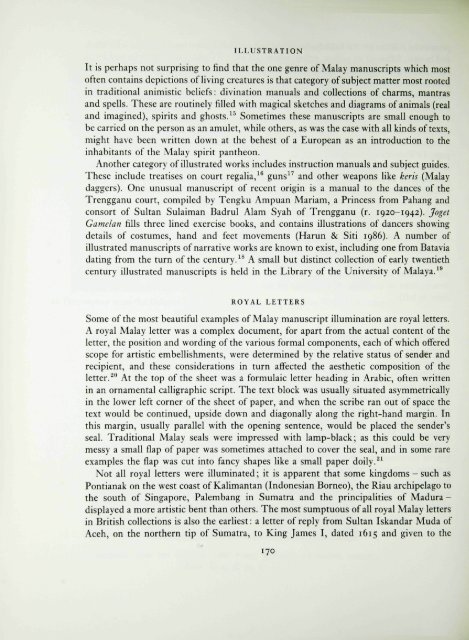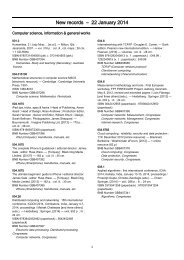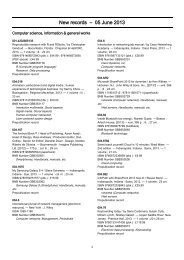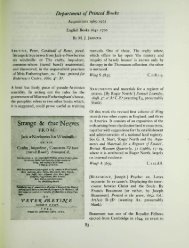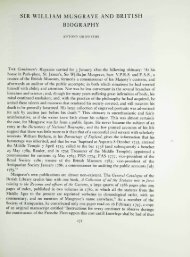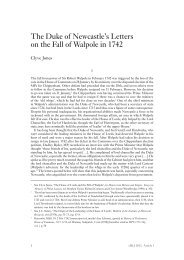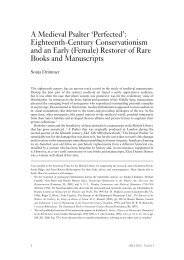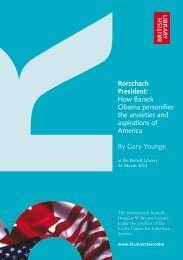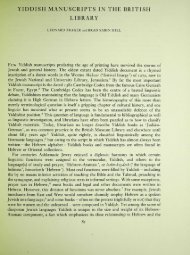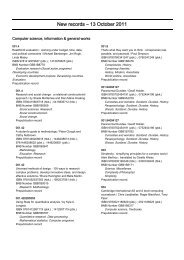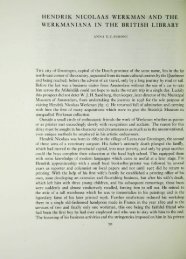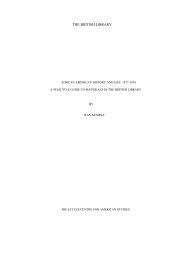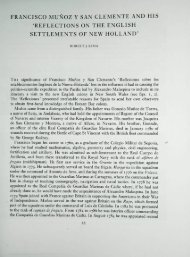MALAY MANUSCRIPT ART: THE BRITISH LIBRARY COLLECTION
MALAY MANUSCRIPT ART: THE BRITISH LIBRARY COLLECTION
MALAY MANUSCRIPT ART: THE BRITISH LIBRARY COLLECTION
Create successful ePaper yourself
Turn your PDF publications into a flip-book with our unique Google optimized e-Paper software.
ILLUSTRATION<br />
It is perhaps not surprising to find that the one genre of Malay manuscripts which most<br />
often contains depictions of living creatures is that category of subject matter most rooted<br />
in traditional animistic beliefs: divination manuals and collections of charms, mantras<br />
and spells. These are routinely filled with magical sketches and diagrams of animals (real<br />
and imagined), spirits and ghosts. ^^ Sometimes these manuscripts are small enough to<br />
be carried on the person as an amulet, while others, as was the case with all kinds of texts,<br />
might have been written down at the behest of a European as an introduction to the<br />
inhabitants of the Malay spirit pantheon.<br />
Another category of illustrated works includes instruction manuals and subject guides.<br />
These include treatises on court regalia,^*^ guns^' and other weapons like keris (Malay<br />
daggers). One unusual manuscript of recent origin is a manual to the dances of the<br />
Trengganu court, compiled by Tengku Ampuan Mariam, a Princess from Pahang and<br />
consort of Sultan Sulaiman Badrul Alam Syah of Trengganu (r. 1920-1942). Joget<br />
Gamelan fills three lined exercise books, and contains illustrations of dancers showing<br />
details of costumes, hand and feet movements (Harun & Siti 1986). A number of<br />
illustrated manuscripts of narrative works are known to exist, including one from Batavia<br />
dating from the turn of the century. ^^ A small but distinct collection of early twentieth<br />
century illustrated manuscripts is held in the Library of the University of Malaya. ^^<br />
ROYAL LETTERS<br />
Some of the most beautiful examples of Malay manuscript illumination are royal letters.<br />
A royal Malay letter was a complex document, for apart from the actual content of the<br />
letter, the position and wording of the various formal components, each of which offered<br />
scope for artistic embellishments, were determined by the relative status of sender and<br />
recipient, and these considerations in turn affected the aesthetic composition of the<br />
letter.^** At the top of the sheet was a formulaic letter heading in Arabic, often written<br />
in an ornamental calligraphic script. The text block was usually situated asymmetrically<br />
in the lower left corner of the sheet of paper, and when the scribe ran out of space the<br />
text would be continued, upside down and diagonally along the right-hand margin. In<br />
this margin, usually parallel with the opening sentence, would be placed the sender's<br />
seal. Traditional Malay seals were impressed with lamp-black; as this could be very<br />
messy a small flap of paper was sometimes attached to cover the seal, and in some rare<br />
examples the ffap was cut into fancy shapes like a small paper doily.^^<br />
Not all royal letters were illuminated; it is apparent that some kingdoms - such as<br />
Pontianak on the west coast of Kalimantan (Indonesian Borneo), the Riau archipelago to<br />
the south of Singapore, Palembang in Sumatra and the principalities of Madura -<br />
displayed a more artistic bent than others. The most sumptuous of all royal Malay letters<br />
in British collections is also the earliest: a letter of reply from Sultan Iskandar Muda of<br />
Aceh, on the northern tip of Sumatra, to King James I, dated 1615 and given to the<br />
170


